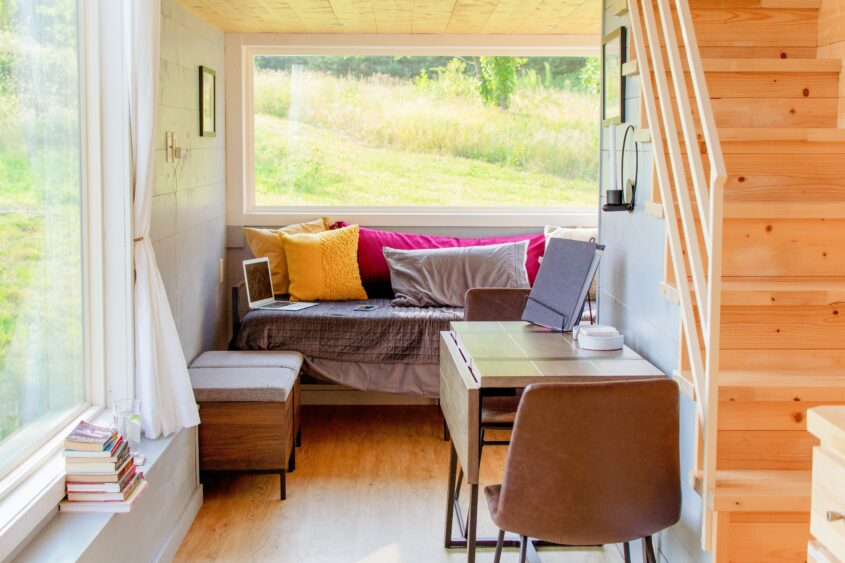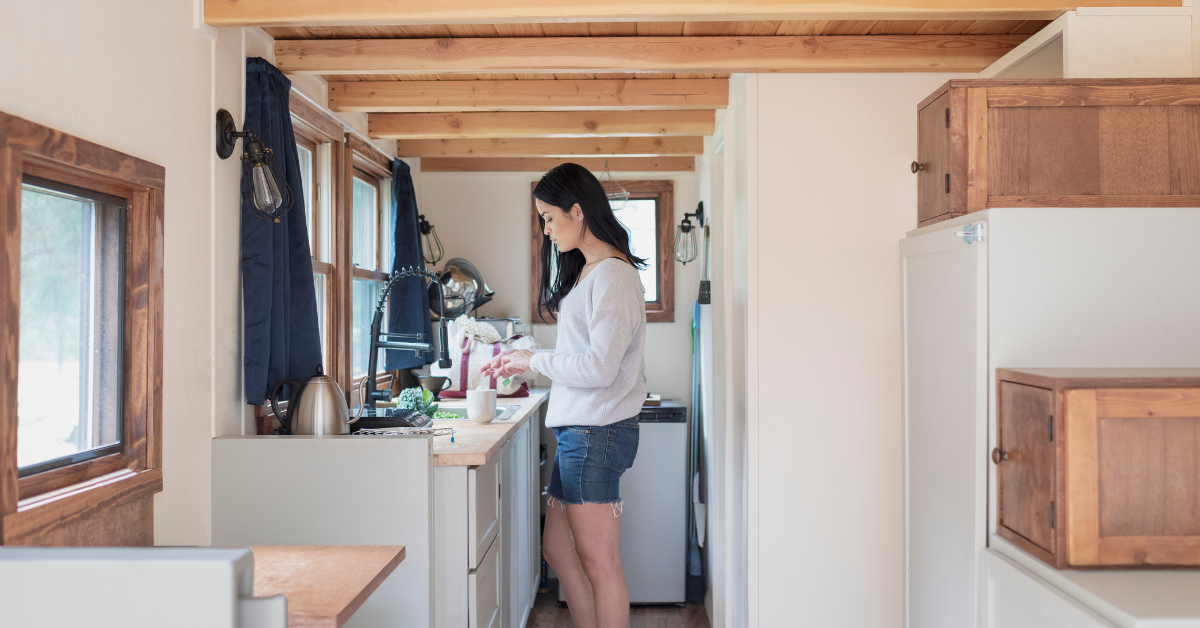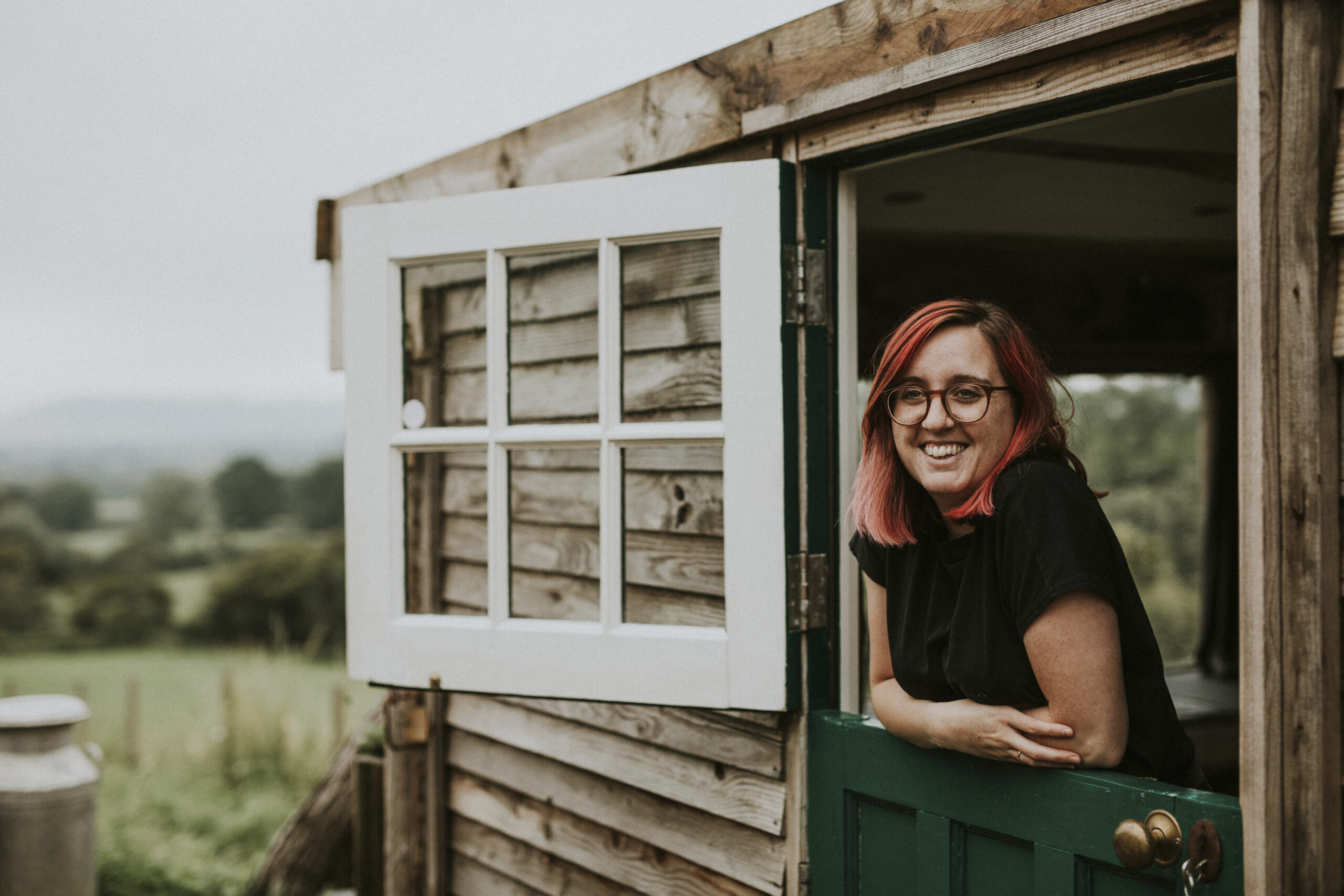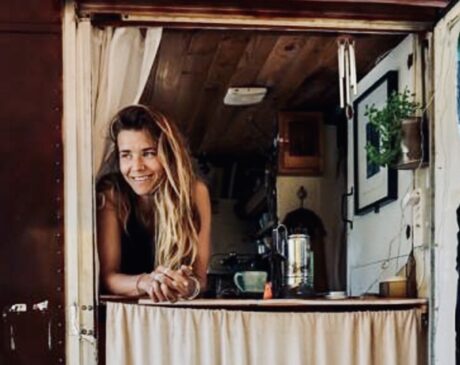Living in a tiny house: pros and cons

One prominent trend that emerged during the 1990s within the real estate landscape is the concept of tiny house living. While this lifestyle choice may be a perfect fit for certain individuals, couples, or families, it could turn into a potential nightmare for others.
Let’s see the pros and cons of living in a tiny house:
Defining Tiny House Living
Tiny house living represents an architectural and societal movement advocating for a minimalist approach to dwelling spaces. Rather than individuals or families owning expansive houses or mansions, this movement encourages people to inhabit compact, often transportable residences.
The typical size limit for a tiny home is a maximum of 400 square feet of floor area, excluding any loft spaces. Occasionally, these diminutive dwellings are colloquially referred to as micro-homes. The overarching objective of embracing small house living revolves around achieving contentment with as few material possessions and living space as possible.
Tiny House Pros and Cons
PROS
Tiny house living offers a range of benefits that are essential for prospective homebuyers or individuals considering a transition to compact living. Understanding both the advantages and disadvantages of this lifestyle is crucial, as your living arrangement can significantly impact your life.
1. Cost-Efficiency
Tiny homes are typically much more budget-friendly compared to conventional houses due to their compact size. While it’s possible to incur higher costs by opting for premium building materials and features, a basic tiny home, according to HomeAdvisor, can range from $30,000 to $60,000.
This cost-effectiveness becomes particularly appealing in the face of rising living expenses, making tiny house living an attractive financial choice for individuals and families seeking to build savings and navigate a challenging economy.
2. Minimizes Environmental Impact
Tiny homes excel in energy efficiency when contrasted with larger, more spacious residences. Their modest dimensions contribute to a significantly smaller environmental footprint than their larger counterparts.
This environmentally conscious aspect of tiny house living garners support from numerous environmental activists as it plays a pivotal role in mitigating the adverse effects of global warming and subsequent climate change.
Furthermore, tiny homeowners have the opportunity to integrate eco-friendly enhancements into their dwellings. These can include the use of sustainable building materials, the incorporation of various solar technologies, and engaging in gardening or homesteading practices, all of which further reduce their ecological impact and promote sustainable living.
3. Minimal Clutter
Tiny homes present a significant challenge when it comes to storage, given their limited space. This constraint may require you to forgo certain furniture items or decorative accents that you’d have in a traditional home.
Nonetheless, this limitation has a silver lining: less space means less clutter. In a tiny house, everything you own must find a place or necessitate additional off-site storage. This enforced minimalism can be a notable advantage, especially for those who detest clutter.

4. High Customization Potential
Tiny house living offers an exciting opportunity for individuals to create their ideal small-scale dwelling relatively quickly, compared to the extensive time and effort required for large homes or mansions. Tiny homes are exceptionally customizable, permitting rapid layout changes.
However, if you opt to construct your tiny home from the ground up, it’s crucial to be entirely satisfied with the initial design. Substantial alterations, renovations, or remodeling projects would demand more time, resources, and investment if you wish to modify the interior or exterior of your tiny home.
5. Mobility
A surprising advantage of tiny homes is their inherent portability. These compact dwellings, ideally constructed on a flatbed trailer, can be easily hitched to a vehicle and taken along while traveling.
For certain homeowners, owning a tiny mobile home represents a significant advantage, particularly if they struggle with deciding on a permanent residence.
CONS
Similar to most living arrangements, tiny house living is not without its downsides. Before embracing this lifestyle, it’s essential to carefully consider the disadvantages it presents.
Evaluating how these drawbacks align with your lifestyle and priorities will help determine whether tiny house living is a viable option for you and your family.
1. Limited Living Space
As previously highlighted, the inherent limitation of space is a fundamental aspect of tiny house living. For individuals who prioritize ample living area, this constraint can pose significant challenges. In a tiny home, maneuvering comfortably, storing belongings, or finding solitude can become complex tasks.
For those with large families, the tiny house lifestyle may not offer the enjoyable and spacious living experience they desire. As implied by its name, tiny house living is not designed to provide expansive, open spaces.
2. Unforeseen Expenses
Tiny homes typically lack the same level of insulation found in standard houses, leading to unpredictable indoor temperatures dependent on your geographic location. This means sweltering summers and freezing winters could necessitate the use of heating or cooling systems, which can be an unexpected expense overlooked by many prospective tiny homeowners.
Additionally, frequent travel could inflate your expenditures. Renting space at RV parks or campsites can become costly, and connecting essential utilities may further raise your costs. Therefore, it’s crucial to assess your financial stability before embarking on the tiny house lifestyle.
3. Depreciation in Value
In contrast to conventional homes, tiny houses often experience a decrease in their resale value over time. Even if your tiny home boasts luxurious features, it’s prone to lose its market value. Securing a loan for a tiny home construction project can also prove challenging.
Even substantial upgrades or renovations to your tiny home may not be sufficient to attract potential buyers when it comes time to sell.
4. Limited Accessibility for Individuals with Disabilities
The compact nature of tiny houses poses challenges for individuals with physical disabilities. In the realm of tiny home living, tasks often require climbing ladders or navigating through tight spaces, such as lofts or bathrooms.
While it’s conceivable to design and construct a tiny home that accommodates individuals with disabilities, achieving a comfortable living environment can remain problematic. Furthermore, welcoming guests with disabilities to your tiny home may present logistical difficulties.

5. Potential Legal and Regulatory Hurdles
Despite the emergence of the tiny house trend in the 1990s, many municipalities and local jurisdictions have yet to update their building codes or regulations to encompass small dwellings. Not all local building codes permit legal residence in tiny homes.
If you plan to embark on a DIY tiny home project, it’s imperative to investigate the legalities of your specific area or engage with local authorities to discuss your intentions. The last thing you want is to invest in a tiny home only to discover that it cannot be legally inhabited in your chosen location.
Deliberate on the Pros and Cons of Tiny House Living
Selecting your ideal living arrangement can be a complex decision. Factors such as location, commuting, proximity to loved ones, and the appropriate home size for your family all come into play.
While tiny house living may be an appealing option for you and your family, it is essential to be well-informed about the advantages and disadvantages. Weighing the pros and cons of tiny house living before committing to significant investments or lifestyle changes is paramount.



